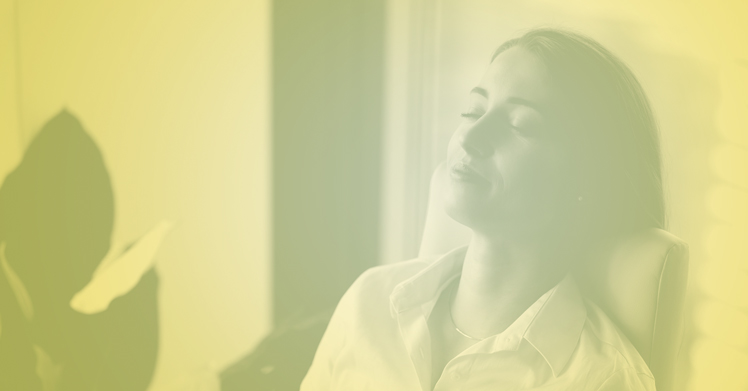Mindfulness has become a popular way for many people to de-stress, reduce anxiety and de-clutter the mind. It is a form of meditation that helps people to ‘live in the present moment in an enjoyable way rather than worrying about the past or being concerned about the future’*.
Research by the BDA, Practice Plan and Dental Protection tells us that the majority of the profession feels stressed – particularly when it comes to the risk of complaints and litigation, meeting standards and balancing the delivery of quality care within the parameters of their working day.
Research has shown that mindfulness can reduce the recurrence of depression, decrease work-related rumination and fatigue as well as improve sleep quality. Given the intense pressures dentists often feel under, mindfulness could provide a way to mitigate the impact of this. Below are three simple mindfulness exercises that you can try:
Freeze**
- Tell yourself to ‘freeze’. Hold your posture but not your breath (you can be at a desk, doing the dishes, standing in a queue, etc).
- Scan your body slowly up and down, observing areas of excess tension.
- Don’t change anything yet. Notice how you are breathing.
- When you feel in tune with yourself, tell yourself to ‘defrost’. Allow tension to release.
- Make little adjustments where appropriate – sit/stand straighter, loosen shoulders/neck, etc.
- Be systematic, make finer and finer adjustments.
- Take a deep breath and sigh as you breathe out.
- Feel yourself breathing.
- Can you give the breath more space and freedom?
- Notice how much your mood is changing.
- Resume your former activity when ready, retaining an awareness of the body.
We Are all Flowers***
- Repeat the following silently to yourself as you breathe in and out.
- Breathing in, I know I am breathing in.
- Breathing out, I know I am breathing out.
- In/out.
- Breathing in, I see myself as a flower.
- Breathing out, I feel fresh.
- Flower/fresh.
- Breathing in, I see myself as a mountain.
- Breathing out, I feel solid.
- Mountain/solid.
- Breathing in, I see myself as still water.
- Breathing out, I reflect things as they are.
- Water/reflecting.
- Breathing in, I see myself as space.
- Breathing out, I feel free.
- Space/free.
The Breathing Space*
- Sit upright without straining (if this isn’t possible, try standing or lying down).
- Ask yourself: What bodily sensations am I aware of at the moment? Feel your posture, become aware of any aches, pains or pleasant sensations. Just accept them as they are, as far as you can.
- Then, ask yourself: What emotions am I aware of at the moment? Notice the feelings in your heart or belly area, or wherever you feel emotion.
- Then, ask yourself: What thoughts am I aware of passing through my mind at the moment? Become aware of your thoughts, and the space between yourself and your thoughts. If you can, simply observe your thoughts rather than becoming caught up in them.
- Then focus your attention on your belly area and, as best you can, feel the whole of your in-breath and the whole of your out-breath. You don’t need to change the rate of your breathing, just become mindful of it in a warm, curious, friendly way.
- If your mind wanders away, gently and kindly guide your attention back to your breath. Notice the difference between each breath and how precious each one is.
- Consciously expand your awareness from your belly to your whole body. Get a sense of your entire body breathing.
- As your awareness heightens within your body, notice its effect.
- Accept yourself as perfect and complete just as you are, just in this moment, as much as you can.
Sources:
*ALIDINA, S., Mindfulness for Dummies, 2nd ed., Chichester: John Wiley & Sons, 2015.
**HARRISON, E., Teach Yourself to Meditate, London: Piatkus, 2014.
***NHAT HANH, T., Touching Peace: Practising the Art of Mindful Living, Berkeley: Parallax Press, 1992
About Kathryn Howard
Kathryn Howard is a qualified yoga teacher with a Diploma in Mindfulness, Meditation, Movement & Relaxation.
